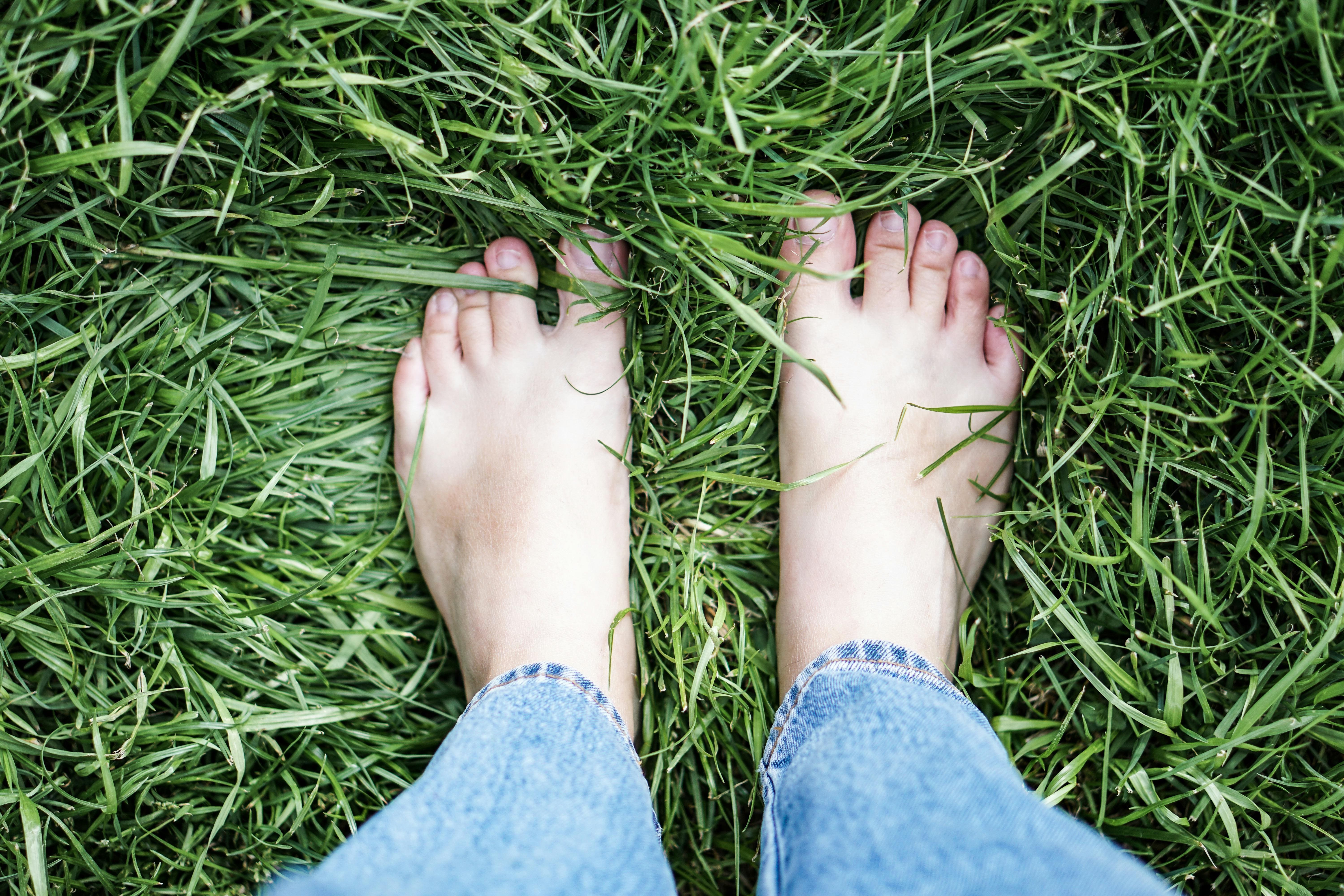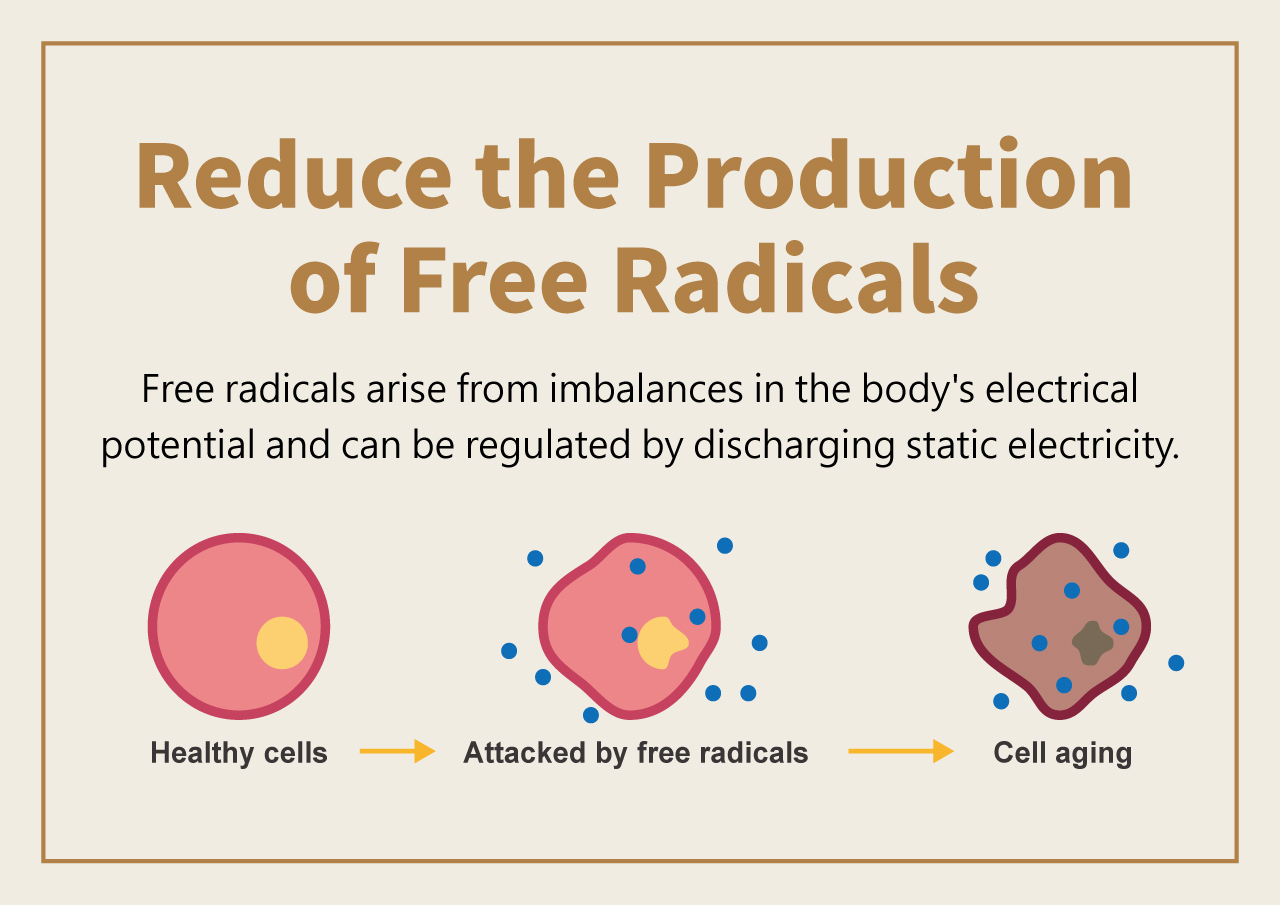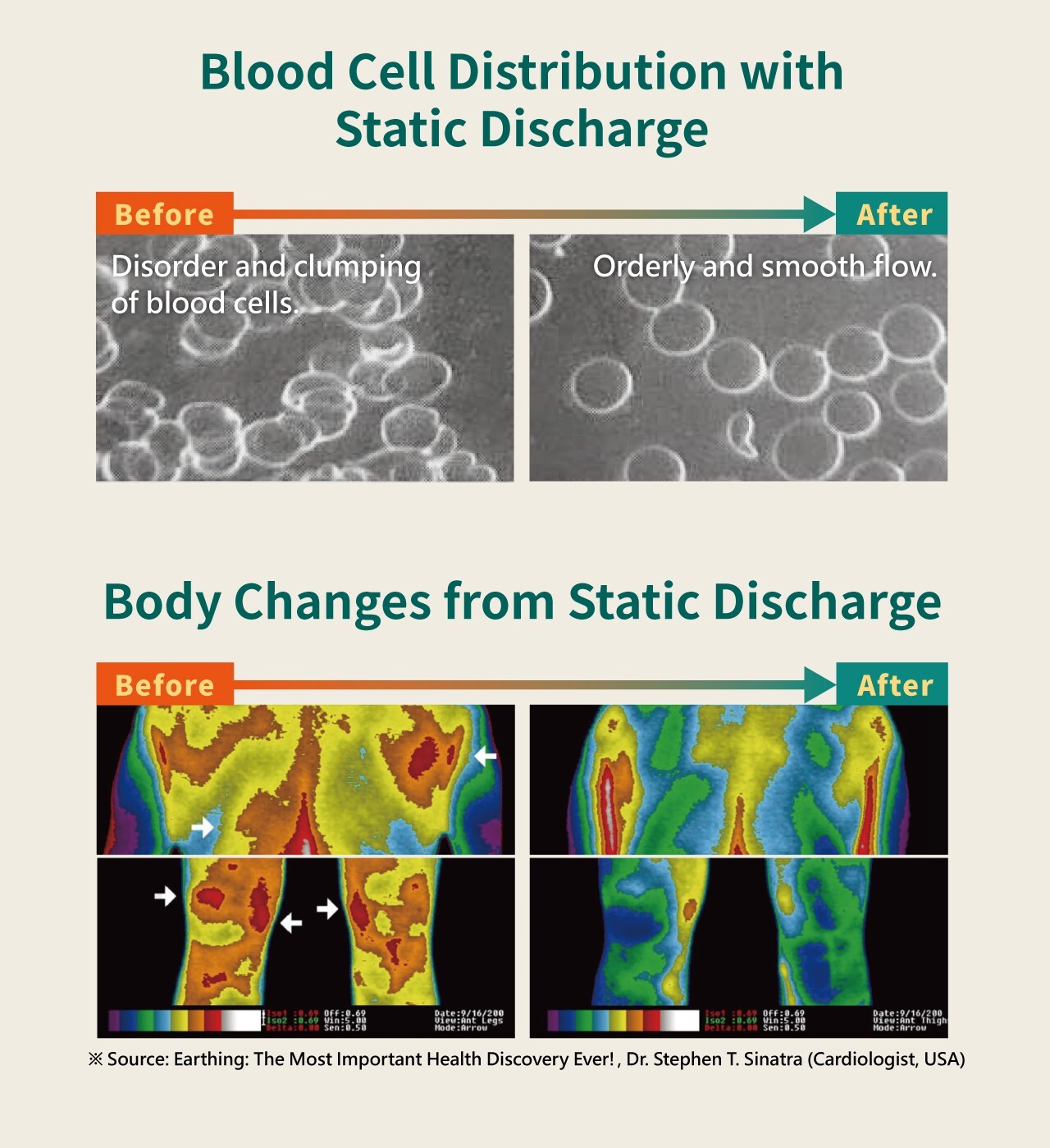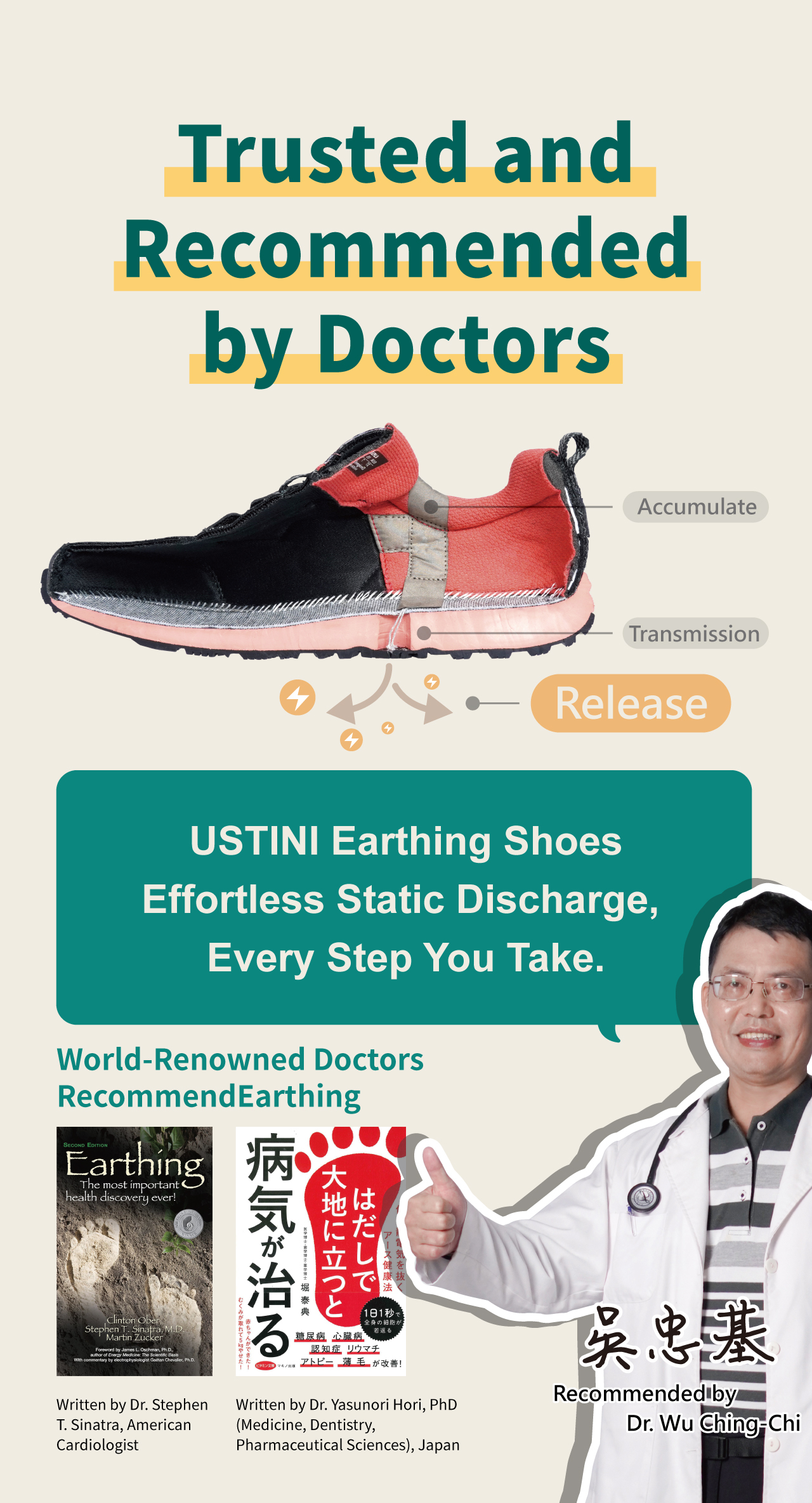What is Earthing? The Most Natural Power from the Earth

Have you ever felt this way—walking barefoot on the beach or running across a grassy field, suddenly feeling relaxed as if recharged by nature? This sense of lightness and ease is not an illusion, but an experience of Earthing (Grounding).
Earthing refers to directly connecting the human body to the earth, through the feet or skin touching the ground, releasing excess static electricity while absorbing the earth’s free electrons to help the body restore electrical balance. Though often overlooked, it is closely tied to our health.
According to Dr. Stephen T. Sinatra in his book Earthing: The Most Important Health Discovery Ever?, just as sunlight helps the body produce Vitamin D, connecting to the earth provides “Vitamin G (Ground),” the nourishing current from nature.
In modern life, wearing rubber-soled shoes and living in concrete buildings reduces our contact with the earth, causing this “natural energy” to gradually fade. This article will guide you to understand what Earthing is and how to make it part of your daily routine, even in an urban lifestyle.
Why Do We Need Earthing? A Perspective from Electricity
The human body is a complex “bio-electrical system”: the heart beats with electrical currents; the brain and nerves transmit signals through voltage; muscles contract and relax through electrical activity.
Yet modern habits often cut us off from the earth: most shoes are made with insulating soles that block earth’s electrons; working long hours in offices or high-rise buildings lowers ground contact; and with the prevalence of electronics, opportunities to interact with natural energy are rare. Static electricity and free radicals easily accumulate in the body. Earthing acts like pressing a “reset button,” helping us restore natural balance.


What are the Benefits of Earthing?
When people talk about earthing, some common experiences are often shared:
- Relaxation: Walking barefoot on grass or sand often helps people feel less stressed and more present.
- Easier rest: Some find it easier to settle down and enter a restful state after earthing.
- More vitality: Many report feeling lighter and more energized after earthing.
- Comfort after exercise: Outdoor activity followed by earthing can help the body unwind more smoothly.
Of course, everyone’s experience is different, but these are common observations. The greatest value of earthing is in reconnecting us with the earth.
Practicing Earthing in Daily Life
The Most Natural Ways
The simplest method is to allow the skin to directly touch natural ground for at least 30 minutes a day: walking barefoot on grass, sand, or soil; touching plants or trees with your hands (avoid dead or dry branches); sitting or lying on the ground outdoors. These practices help release excess static and ease accumulated tension.
Urban Alternatives
In cities, daily barefoot grounding is rare, so various tools have been developed: grounding mats or grounding shoes allow people to simulate the natural sensation of barefoot contact even indoors or in offices. These products do not provide medical treatment; they simply conduct electrical charge, letting you access the earth’s energy when direct barefoot contact is not possible. The true healing source is the earth itself—these tools only recreate the natural connection, not any “special function” after power is conducted. USTINI Earthing Shoes are designed with static-release conductive structures, enabling you to release excess static while walking. With added comfort and support, they make earthing an easy part of daily life without extra effort.

Earthing for Different Groups
- Office workers: Sitting for long hours often causes swelling or stress. A 10–20 minute grounding walk on grass, dirt, or wet sand during breaks helps relax and restore focus.
- Healthcare/Service workers: Standing or walking all day puts strain on the feet. Short grounding walks with calf stretches before or after work can provide relief.
- Seniors: Safety and stability first—choose flat, dry, non-slippery surfaces, walk slowly with breathing rhythm. In bad weather, touching plants or using grounding tools indoors is a safer alternative.
- Athletes: 15–30 minutes of grounding after training, combined with stretching, aids relaxation and recovery.
- Poor sleepers: Short grounding walks before sunset, paired with reduced blue light exposure and regular sleep routines, help the body and mind relax.
Return to the Earth, Regain Energy
Earthing reminds us that health is not just medical diagnoses, but a rhythm of daily life. Whether barefoot on grass or walking on the beach, it is a way to reconnect with the earth. Even in cities where barefoot contact is rare, simple practices can bring earthing into everyday life. The next time you walk down the street, remember: beneath the asphalt lies nature’s most original healing power.
※ This article summarizes lifestyle and scientific research. It is not medical advice or a guarantee of efficacy. Please consult professionals if you experience discomfort.
References
- Ober, C., Sinatra, S. T., & Zucker, M. (2010). Earthing: The Most Important Health Discovery Ever? Basic Health Publications.